
Transportation is a critical component of the supply chain process. From delivery planning to carrier management to shipment tracking, there are numerous activities that must be effectively managed. While small businesses can rely on spreadsheets and phone calls to handle their transportation operations, as turnover grows, more robust solutions are needed. That’s where a Transportation Management System (TMS) comes in.
What is a Transportation Management System (TMS)?
A TMS is powerful software that aids in the planning and execution of the physical movement of goods. It can be used by various members of the supply chain, including manufacturers, distributors, and third-party logistics providers (3PLs). The standout feature of a TMS is its control tower capabilities. Acting as an oversight mechanism, the control tower collects real-time data about goods using API or EDI technology, providing valuable insights throughout the shipment process. This data can be transformed into analytics on supply chain performance, financials, and customer service. In short, a TMS lays the foundation for optimization.
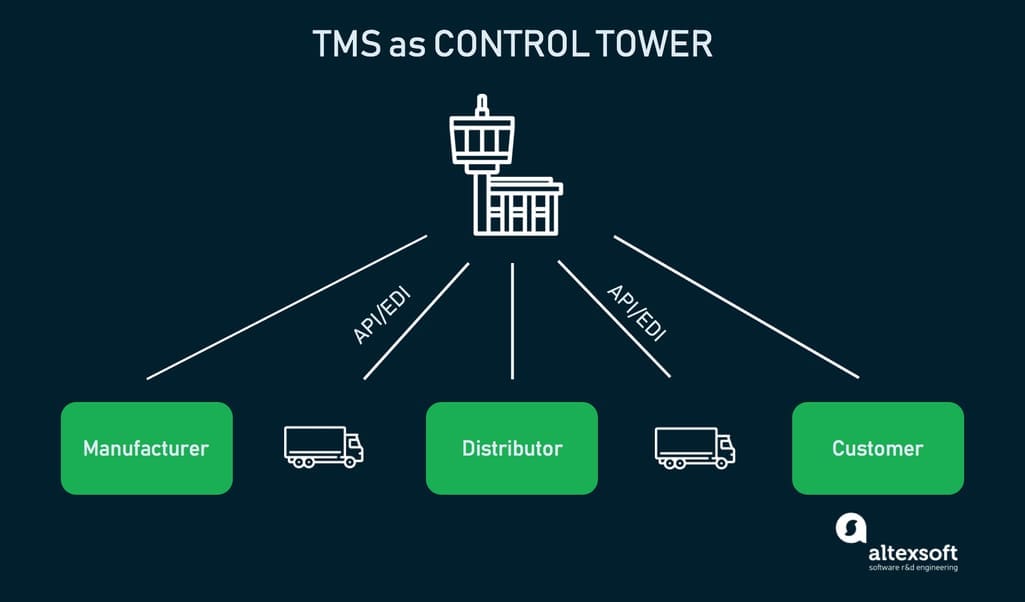
There are two primary user groups for TMS: shippers, manufacturers, and distributors, and third-party logistics providers (3PLs). Vendors typically offer the same platform for both groups, with some feature exceptions. A TMS enables you to plan and execute your shipment processes with visibility, often in a modular fashion that caters to your specific needs. It also integrates with other tools in your ecosystem such as ERP, Logistics Management Systems (LMSs), Warehouse Management Systems (WMSs), and fleet management software.
Unlocking TMS Features for Effective Transportation Planning
Transportation Planning Features
The transportation process starts with creating a transport request that includes the quote and shipment details. From there, shippers tender loads to carriers, who then plan capacity and cargo distribution.
Order Management
A TMS facilitates comprehensive order management by allowing all parties involved to access order information. Key features include:
- Order entry – Manual or automatic entry of order details, including commodity, weight, location, and destination. The system generates a route, assigns transport and driver, and calculates ETA. Integration with WMS ensures the order goes to its scheduled transport.
- Order overview – Provides order planners and drivers with a dashboard showcasing created orders, routes, and assigned transports. Documents are automatically linked to corresponding orders for easy access and updates on status changes.
Tendering
TMSs generally automate shipment tendering. Various tendering methods are available, such as least-cost, auto-award, allocations, service-based, and customer-based, allowing you to choose the best strategy for your business.
Shipment Rate Management
A rate engine is a critical tool within a TMS. It calculates transportation rates for parcel, LTL, truckload, and intermodal shipping based on base rates, discounts, and contract agreements. Custom pricing rules can be created, and quotes can be automatically generated for clients.
Load Planning
TMS enables you to plan loading space for trucks, trailers, and containers. You can calculate available loading space, considering maximum loads and weight. Some TMSs even offer 3D load planning features, allowing you to visualize and adjust cargo distribution and space utilization.
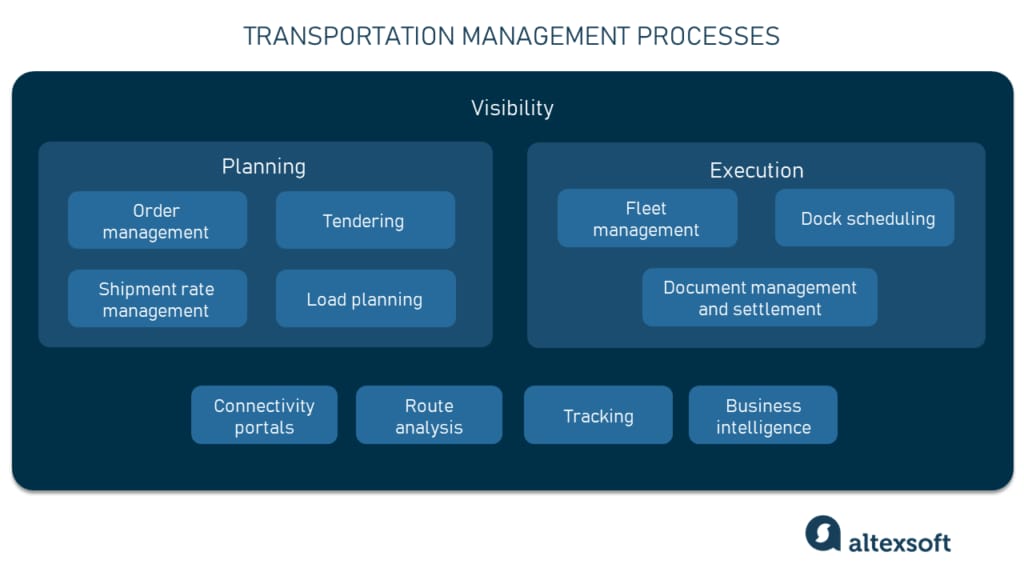
Transportation Execution Features
Once agreements are in place between a shipper and carrier, the actual transportation of goods takes place. While a TMS cannot physically deliver freight, it can assist with fleet management, dock scheduling, and settlement processes.
Fleet Management
For businesses with their own fleet, a TMS provides a platform to manage assets effectively. Features may include driver and equipment assignment, dispatch management, and financial settlement. Advanced fleet management software can even monitor fuel consumption, vehicle maintenance, and remote truck control.
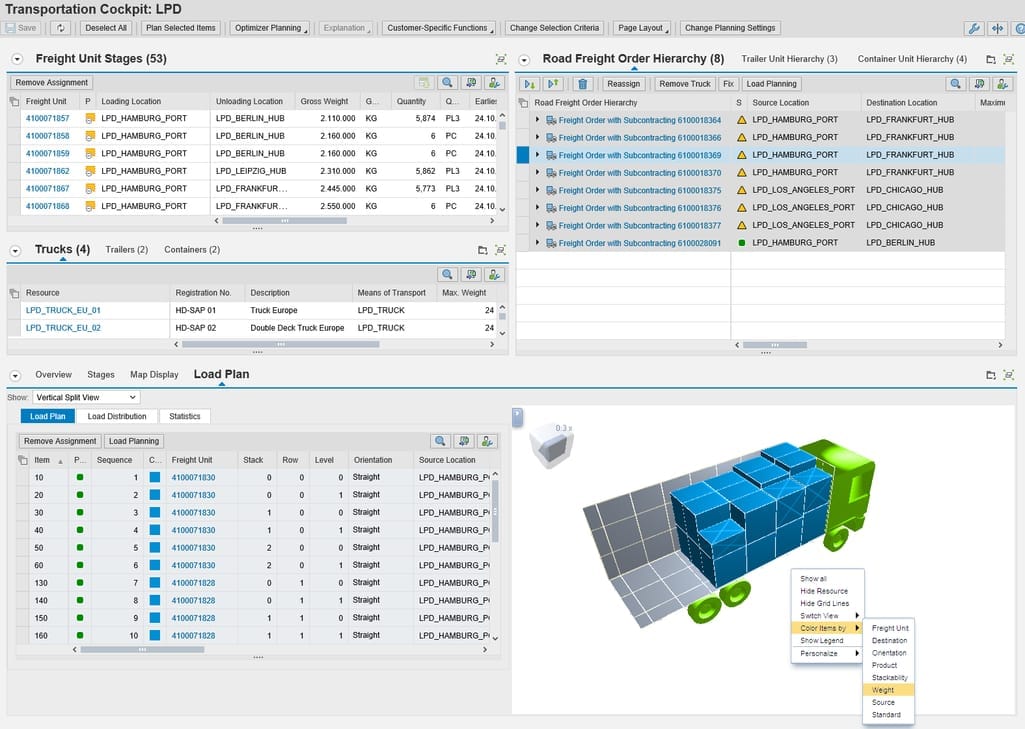
Dock Scheduling and Yard Operations
TMS integration with a WMS or yard management system streamlines dock scheduling and load sequencing. This allows for more accurate scheduling, application of business rules, and real-time load status updates.
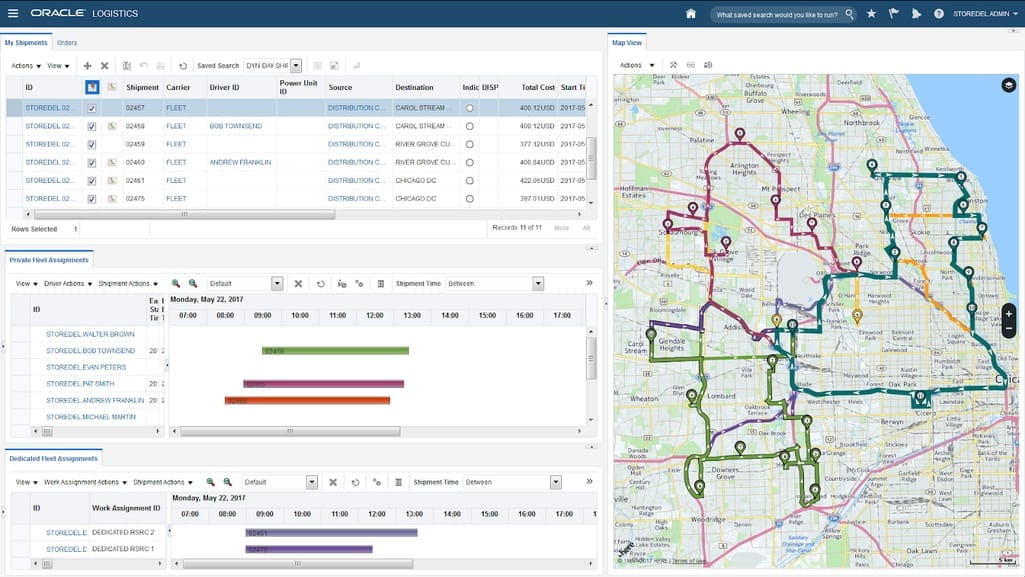
Documentation Management and Settlement
Transportation involves complex documentation and settlement processes. TMSs simplify these processes by generating digital bills of lading, invoices, and conducting freight auditing. Billing, invoicing, and claims management become streamlined and efficient.
Transportation Visibility Features
Transportation doesn’t end with delivery. It’s essential to maintain effective communication with partners and analyze operations for future improvements. TMSs can assist in these areas as well.
Connectivity Portals
TMSs typically support partner and customer connectivity via email. Some vendors offer customizable self-service portals for customers to create and track orders, while partners can submit tenders and review invoices.
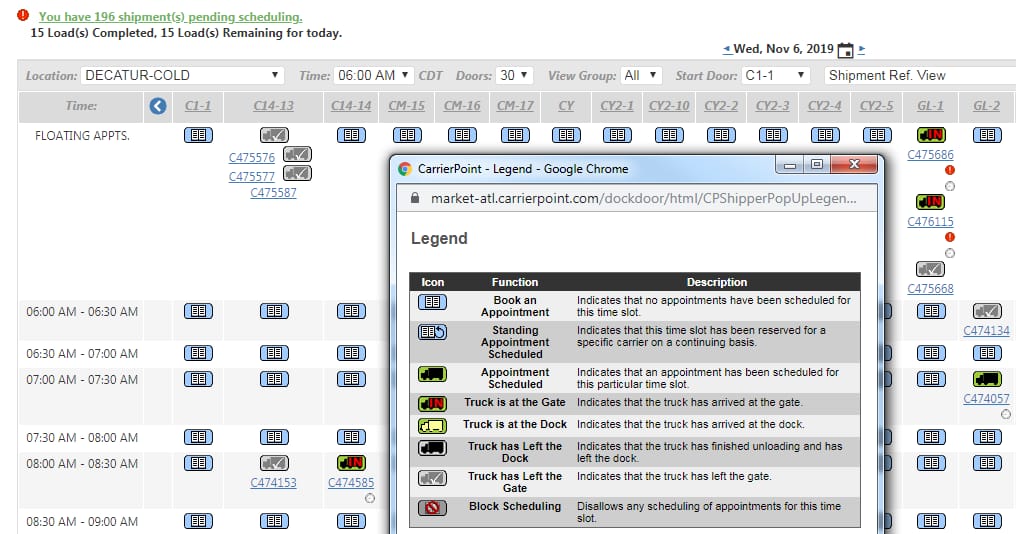
Route Analysis
While planning is a core function of a TMS, routing capabilities may be limited. In such cases, specialized software with advanced routing algorithms can be used in conjunction with a TMS to optimize routing activities.
Tracking, Tracing, and Event Management
Track and trace technology allows for real-time monitoring of item movements during transportation. This technology provides location updates, enhances security, and facilitates scheduling. Telematics devices and RFID tags linked to a TMS enable continuous tracking and updates.
Business Intelligence and Analytics
TMSs offer real-time analytics and custom reporting for in-depth performance analysis. Business Intelligence tools provide insights into carrier, product, and route performance, enabling informed decision-making and operational improvements.
Seamlessly Integrating Your TMS with Other Systems
For a TMS to function optimally, seamless integration with other systems is crucial. The following integrations are common and beneficial:
- ERP (Enterprise Resource Planning) – For accurate order details and transportation planning.
- WMS (Warehouse Management System) – To coordinate warehousing and shipping operations effectively.
- Order Management/Inventory Management/Retail/E-commerce Solutions – For streamlined shipment management.
- Accounting/Settlement Tools – To enhance billing, invoicing, and claims management processes.
- Business Intelligence Platforms – For comprehensive data analysis beyond the capabilities of a TMS.
- External Carrier or 3PL System – To exchange transportation data smoothly and enhance collaboration.
- Freight Marketplaces – For increased access to load boards and market opportunities.
The Leading TMS Vendors: Unveiling Their Offerings
There are several major TMS vendors in the market, each with unique features and capabilities. Here are a few notable ones:
Oracle Transportation Management (OTM)
OTM is part of Oracle’s extensive supply chain management product suite. It caters to both shippers and 3PLs, offering features such as business process automation, optimization engines, analytical dashboards, fleet management, automated payment and billing, bid execution optimization, and mobile app interfaces for private fleet drivers and third-party carriers.
As you explore the world of transportation management, it’s essential to understand the benefits, features, and capabilities of a TMS. By leveraging a TMS effectively and integrating it with other systems, you can unlock the full potential of your transportation operations.
For additional insights and information on transportation management, visit Management.
